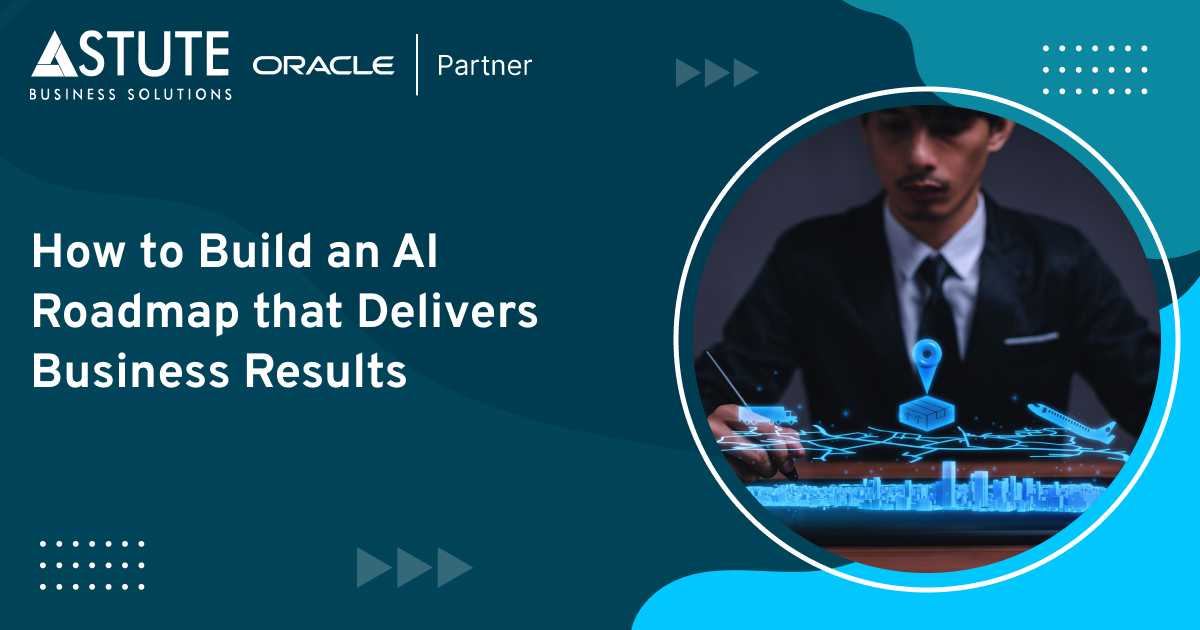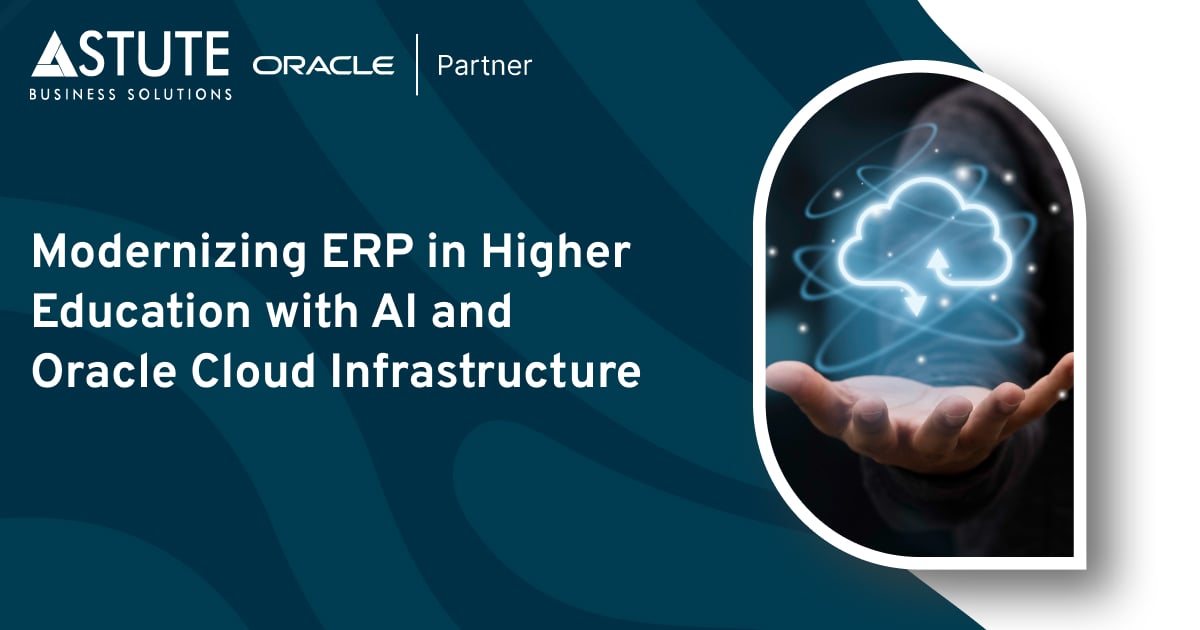How to Build an AI Roadmap that Delivers Business Results

Table of Contents
AI adoption is rising fast, but real success comes from more than just building models. It takes a thoughtful roadmap, clear goals, and the right balance of strategy, people, data, and engineering. Whether you're starting small or scaling AI across the enterprise, knowing where you are and what steps to take next can make all the difference.
At Astute Business Solutions, we guide organizations through every phase of the AI journey. This blog breaks down what a mature AI roadmap looks like and offers insights into how your organization can build long-term success with AI.
Why AI Maturity is the Missing Link
Many companies are already using AI in some form, but few have reached a stage where it's delivering consistent, measurable business value. The most common challenges include:
- Isolated pilots that don’t scale
- Unclear ownership or lack of executive support
- Poor data readiness
- Limited AI literacy across the workforce
- No clear way to measure value or ROI
A structured approach to AI maturity can help address all of these. It helps you move from disconnected projects to a connected, value-driven portfolio.
A Closer Look at the AI Maturity Framework
The AI roadmap includes seven key areas that organizations must focus on to build, scale, and sustain AI programs. Each area includes activities that range from foundational to advanced. Let’s take a look at what’s involved in each one and how you can move forward.
%20(1).png?width=3101&height=3676&name=Table%20(1)%20(1).png)
1. AI Strategy: Build a Plan that Aligns with Business Goals
Every successful AI program starts with a strategy. This means defining a vision, setting goals, and creating a roadmap that connects AI efforts to outcomes that matter.
Start by identifying how AI can support business objectives. From there, set adoption goals, measure maturity, and keep refining your approach over time. Advanced organizations monitor success across the full portfolio and adjust strategy based on results.
Pro Tip: Don’t treat AI strategy as a one-time document. Refine it regularly as capabilities evolve.
2. AI Value: Focus on Impact, Not Just Innovation
AI efforts that don’t deliver measurable results will not last. Organizations need to prioritize use cases that offer clear value and track performance from the start.
Begin with a small set of high-impact use cases, run pilots, and track outcomes closely. As you mature, shift to portfolio thinking and implement processes to monitor and optimize AI value at scale.
Pro Tip: Use product management practices to move beyond pilots and launch real AI products that support end users.
3. AI Organization: Set Up the Right Structures and Leadership
You need more than just data scientists to run a successful AI program. You need clear leadership, defined roles, and a structure that supports scale.
That starts with appointing an AI leader, creating a resourcing plan, and setting up a central team or center of excellence. As maturity grows, you can form strategic partnerships and build repeatable processes for managing AI programs.
Pro Tip: Don't wait too long to establish governance and ownership. It is critical for long-term success.
Ready to Level Up Your AI Strategy?
Discover how we can help you turn AI plans into measurable business results.
4. AI People and Culture: Get Your Workforce AI-Ready
Technology alone won't drive change. Employees must understand how AI fits into their work and how it benefits the organization.
Start by building awareness and creating a change management plan. Later, launch AI literacy programs, define internal champions, and monitor how employees are adapting. This builds trust and encourages adoption across teams.
Pro Tip: AI literacy is not just for IT teams. Everyone from finance to customer support should be included.
5. AI Governance: Set Clear Rules from the Start
As AI adoption increases, so do the risks. Responsible AI requires clear policies, ethical principles, and compliance processes.
Early-stage efforts should identify risks and define high-level policies. As maturity grows, set up governance boards, implement enforcement processes, and monitor how AI is used across departments.
Pro Tip: Build AI governance into your workflows. It should not be an afterthought or external process.
6. AI Engineering: Build a Foundation that can Scale
Engineering is where great ideas turn into working products. A mature engineering foundation ensures your AI models are reliable, reusable, and easy to manage.
Begin by defining a framework, setting up a sandbox environment, and creating reusable design templates. Over time, you can establish MLOps pipelines, develop platform infrastructure, and manage AI UI/UX at scale.
Pro Tip: Treat AI systems like software products. That means version control, testing, and deployment pipelines.
7. AI Data: Power Your Models with the Right Data
No AI system can succeed without high-quality data. Mature organizations know how to manage, monitor, and evolve their data to meet the needs of AI.
Start by assessing data readiness and creating a data plan that supports your initial use cases. As you grow, focus on analytics, observability, quality, and adapting data practices specifically for AI models.
Pro Tip: Use the early AI journey to improve your overall data strategy. AI readiness and data maturity go hand in hand.
The Value of a Roadmap
AI maturity is not just about technical sophistication. It is about creating repeatable processes that turn AI from a cost center into a value driver.
By following a structured roadmap, organizations can:
- Align AI investments with real business needs
- Create a workforce that is ready to adopt and support AI
- Ensure compliance, ethical use, and governance from day one
- Scale pilots into enterprise-wide AI products and services
How We Can Help
At Astute Business Solutions, we work with forward-thinking organizations to accelerate AI maturity. Whether you're just getting started or scaling enterprise-wide, we bring the tools, expertise, and proven frameworks to help you move forward with confidence.
We help clients:
- Assess current AI readiness
- Define strategic use cases
- Launch AI pilots with real business impact
- Establish operating models, engineering best practices, and governance processes
- Measure and monitor AI value at scale
Conclusion
AI maturity isn't about doing everything at once. It's about taking the right steps, at the right time, with the right support.
If you're ready to move beyond isolated pilots and build an AI capability that lasts, we can help.
Let’s talk about how to make your roadmap a reality.
Book a meeting or contact us to get started.
Ratnakar Nanavaty is the Chief Strategist of Astute Business Solutions. For the past 30 years, he has helped 80+ higher education, government, non-profit, public, and private institutions in various capacities. His expertise lies in transition leadership—bringing change to culture, strategy, management, and the revamping of Information Technology Departments. He specializes in assessing, mapping a change strategy, and institutionalizing change.
Search
Tags
Related Posts
Subscribe Our Newsletter
Gain access to exclusive insights, technical know-how and crucial knowledge from Astute experts.
Share Article
See The Team In Action
Upcoming Events
Reach Out



